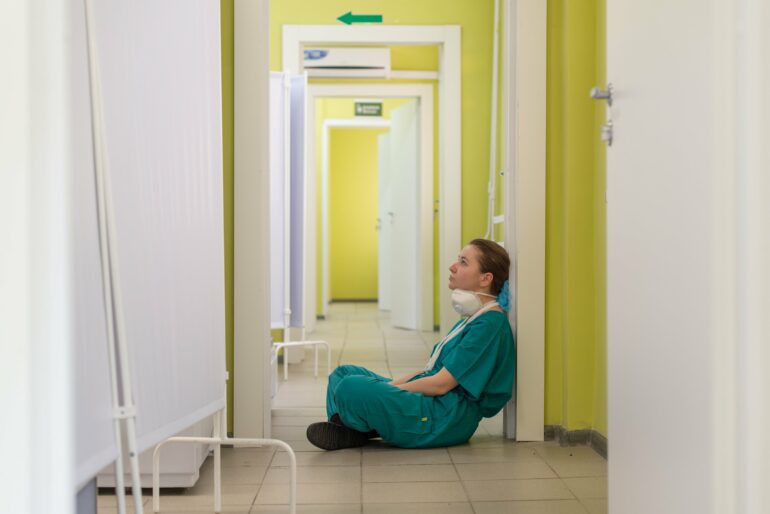Transcendental meditation (TM) may help improve the lives of health care workers experiencing burnout, poor sleep, and anxiety symptoms.
Researchers at Duke University School of Medicine studied TM as a potential stress-reliever in a group of 80 health care workers providing care during the COVID-19 pandemic.
The three-month study showed TM did not significantly reduce acute psychological distress among health care workers compared to usual treatment of access to wellness resources. However, twice-daily meditation did alleviate anxiety, insomnia, and burnout, suggesting meditation would be an effective strategy to mitigate rising exhaustion and burnout among health care workers, according to the study published Sept. 19 in JAMA Network Open.
“We conducted this research at the height of the pandemic, when it was a common daily occurrence for our medical colleagues to be placed in situations of high stress and uncertainty,” said senior study author Patty J. Lee, MD, professor of medicine, cell biology, and pathology, and a pulmonologist and critical care specialist.
Nurses, physicians, and physician trainees volunteered for the study, which reflects high stress and burnout across many roles in health care. Burnout has serious consequences for worker well-being and patient care, authors say.
For the study, 41 participants were randomly assigned to learn and practice transcendental meditation for 20 minutes twice a day, at work or home. TM involves the effortless thinking of a mantra—for example, a sound or saying—without concentration or contemplation, to produce a settled state of so-called restful alertness.
The other participants were offered stress reduction and resilience training, along with referrals for fitness and nutrition help.
TM helped bring down acute distress by 5.6 points on the Global Severity Index, a nine-symptom checklist to measure psychological stress, compared to a 3.8-point drop reported in those who received usual treatment. The difference was not considered large enough to demonstrate a clear benefit of meditation in addressing acute distress.
GSI scores can range from 0 to 72 and most of those in the study started with a GSI of 10, which indicates less distress.
“It was more difficult to show a statistically significant improvement for the GSI because of the already low scores and the relatively small sample size,” Lee explained. “In contrast, the higher scores for the other parameters (burnout, anxiety, and insomnia) made it possible to show statistical significance for those variables even with the relatively small sample size.”
The practice of TM had the largest effect on reducing emotional exhaustion. Feelings of exhaustion and lack of professional accomplishment went down by eight points on the Maslach Burnout Index among those who meditated, compared to a drop of 2.6 points in the control group.
The researchers said TM may be an effective strategy among the organizational and personal approaches used to address health care worker burnout.
Lee’s research team will have the opportunity to study TM in a larger group as it recruits 280 health care workers for a new study.
The randomized clinical trial will measure heart rate variability, brain activity and circulating stress biomarkers before and after interventions such as TM. The results could lead to data-driven approaches to build resilience and battle burnout among health care workers.
More information:
Sangeeta P. Joshi et al, Efficacy of Transcendental Meditation to Reduce Stress Among Health Care Workers, JAMA Network Open (2022). DOI: 10.1001/jamanetworkopen.2022.31917
Citation:
Meditation as a potential strategy for reducing health care worker burnout (2022, October 19)



